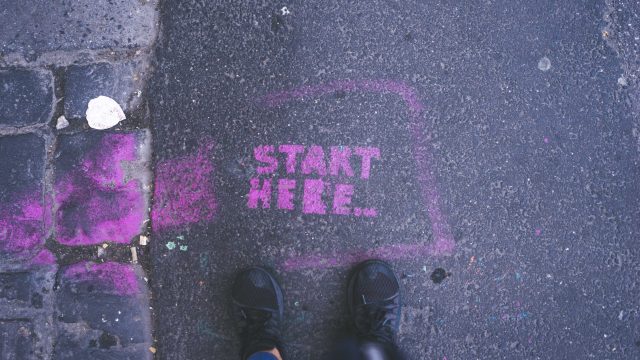If you’ve ever wondered about starting your own business, your thoughts may have turned to Amazon. With access to millions of customers and the ability to sell anything from clothing to cosmetics, Amazon provides a platform for many businesses to grow and thrive by reaching people they otherwise wouldn’t be able to.

It might seem as though selling on Amazon is as easy as just picking a product, uploading it to Amazon and profiting. It isn’t quite as simple as that, of course, and in this article we’re going to take you through exactly how much you can make selling on Amazon.
Can you make money selling on Amazon?
The answer to this question is “yes” – if you couldn’t make money on Amazon nobody would be doing it. However, a more nuanced question is perhaps “is it easy to make money on Amazon”, the answer to which is “maybe, but you need some help getting to know what to look for.” Let’s explain exactly what this means.
Let’s assume you’ve been able to source a product. For the sake of this example let’s say you’re an online arbitrageur, looking to buy from an online retailer and sell on Amazon for a profit. A perfectly viable business model, and one that many people make good money out of.
Amazon will take a fee for each product you sell. You will also have to pay shipping and fulfilment fees if you’re using FBA (which we would highly recommend, by the way.) Let’s say you’ve found a toaster selling at WalMart for $15 and they’re being sold on Amazon for $35. Well, what initially appears as a $20 profit margin is of course less than that after fees and expenses – that’s even before you consider what you need to pay to the IRS in income tax.
This can lead to a situation where at face value, a product appears profitable, but after fees and charges actually makes you a loss. Additionally – returns and refunds are something you need to consider. There’s no real way to stop returns and refunds – you have to consider them as part of the cost of doing business on Amazon and you need to build these costs into your profit margin to ensure you aren’t out of pocket when all is said and done.
So in sum, yes, it’s perfectly possible to make money on Amazon, but it requires a little more thought and consideration than most people initially think.
What fees do I need to pay to Amazon?
It’s worth going through the types of fees you will pay to Amazon to use their platform. Not all of these fees will be applicable, so you’ll have to do a little bit of detective work and consider how your situation will apply to the information below to work out exactly what you’ll be charged.
The real benefit to selling on Amazon is the exposure you get – without access to Amazon’s millions of customers, you will in many cases struggle to get your products noticed by your prospective customers. This is why it’s important to look at these fees not just as Amazon trying to increase their own profit margin, but simply as a cost of doing business.
Referral fees
Amazon will charge you a referral fee on every item you sell on their platform. You can think of this almost as the commission they take for introducing your products to their customers. The category in which you list your products will determine exactly how much Amazon charges you.
This fee is calculated on a percentage of the total sales price, excluding taxes, but including delivery or gift wrapping charges. You’re only charged this when the sale has completed and the customer’s item has been dispatched.
Subscription fees
Amazon has two pricing models for their sellers, named “individual” and “professional”. These pricing models are just to allow you access to the platform. “Individual” sellers are not charged a subscription fee, but are charged per-item. “Professional” sellers pay a fixed monthly fee to access the Amazon platform.
Individual seller plan
This is Amazon’s introductory programme. It doesn’t involve any upfront cost but Individual sellers are charged a $0.99 per-item fee on every sale they make. Individual sellers are also locked out of selling in certain categories.
One of the most significant limitations to the Individual plan is that you are capped at selling 40 items per month. This is OK for sellers who are just starting out and dipping their toes in the water, but if your business starts to scale, not only are you throwing away margin by paying a per-item fee, you’re also restricting your own ability to grow.
Professional seller
The Professional plan has a range of upgrades over the Individual plan but the biggest one is the flat monthly fee of $39.99. However, this allows you to sell as many items as you want – it doesn’t matter if you sell ten units or ten million units, you still pay $39.99 per month to access the Amazon platform.
Professional sellers also get the ability to customize shipping prices and leverage special listing features like promotions and gift services. This can help products stand out from the competition and ultimately make them more profitable. Additionally, Professional sellers get the opportunity to apply to sell in all categories – although this usually isn’t the case immediately, you will need to apply to sell in categories that are considered gated.
FBA (Fulfilled by Amazon) fees
FBA is something we’ve already talked about a little bit in this article. If you don’t know what it is, it’s where Amazon will provide warehousing and dispatch services for you for a fee. Rather than keeping inventory in your own home or your own facility, you ship your products to Amazon, they store them (for which they charge a fee) and then ship them out as and when an order is placed. Amazon also handle customer service and returns.
You’ll pay a few different types of fee if you’re using FBA, including storage fees, overage fees and shipping fees. Storage fees are charged either monthly or long-term, and this is dependent on the amount of space your items take up in their warehouse. You may also be charged higher fees during peak periods such as Black Friday or Christmas. Overage fees are charged when your on-hand inventory exceeds your capacity limit. This is why it’s really important not to just send stock to Amazon when you have it – you need to ensure that it won’t exceed your capacity limit as Amazon will charge you for this – and if you want items shipped back to you to reduce your on-hand inventory, this is usually very expensive. Shipping fees are obviously charged when Amazon picks, packs and dispatches an item to your customer.
FBM (Fulfilled by Merchant) Fees
FBM is where Amazon is not involved in the fulfilment process. An order comes in, and instead of Amazon shipping it to your customer, you handle the picking, packing and dispatch from your own facility. You must also deal with returns and customer service yourself. Amazon charges separate fees for FBM sellers – in many cases these can actually be more expensive than the equivalent FBA fee.
As we mentioned this isn’t an exhaustive list of fees Amazon might charge you – but they are some of the most common, and it’s well worth checking exactly what you expect to be charged before committing to selling your products on Amazon.
Sourcing products to sell on Amazon
There are many different ways you can source and sell products on Amazon and which one you choose will affect how much money you can make. They all have different costs involved which can affect your profit margin . Let’s start by taking a look at the main ones.
Dropshipping – Beware!
Dropshipping is where someone else holds inventory for you. You list the item for sale, and when someone buys from you, you place an order from your dropshipper, who ships the item directly to the customer. If done right, this can be profitable and it does eliminate a lot of the logistics involved in holding inventory yourself. It is, however, fraught with problems. Note that if you violate Amazon policies you can expect your account to get banned.
Wholesale
Wholesale involves sourcing products either from manufacturers or wholesalers and then listing for sale on Amazon at an increased price. You can choose to fulfill via FBA or hold items in your own facility. Wholesale is really for experienced retailers and Amazon sellers, as it can involve significant investment in stock.
Wholesale can be very profitable – but if you don’t know what you’re doing, you can also lose money. It’s worth mentioning, however, that SourceMogul has a wholesale feature whereby you can check your suppliers for your desired products and we will tell you which ones could profit.
Private label
Private label involves building a brand and having another company effectively white-label the products for you. You aren’t involved in the manufacturing process, but you are responsible for building and marketing the brand. You can then have your private label products shipped to Amazon to fulfill via FBA, or you can handle the shipping and fulfilment yourself through FBM.
Private label is not something we would recommend to the inexperienced Amazon seller – and often not to the experienced Amazon seller, as building and marketing a brand is a very, very different beast to selling someone else’s products. Unless you really know what you’re doing, our advice would be to stay away.
Online arbitrage
Online arbitrage is probably the most straightforward way to get started selling on Amazon – and it can actually be very profitable while also exposing you to very minimal risk. Online arbitrage involves sourcing products at online retailers at a discount and selling them on Amazon for a profit, For example – you might have found a garden chair on clearance at Target for $30. You check Amazon and this exact item is selling for $120. You buy the chair for $30, sell it for $120 and you make a profit of $90 before Amazon fees and charges.
If you find the right products, you can do this all day long, make a lot of money and you are never exposed to the same level of risk that you would be with private labeling or wholesale. It’s also very scalable – if you can get hold of ten of those chairs rather than just one, and you can sell them all, your profit goes up to $900 before fees and charges.
SourceMogul is one of the most powerful Amazon arbitrage tools on the market, scanning millions of products at thousands of retailers and showing you the most profitable arbitrage opportunities. You can get a free 7-day trial to test it out for yourself by signing up at the link below.
How to maximise your profits by selling on Amazon
Now we’ve discussed ways to source your products, let’s look at some ways you can maximize your profits.
Make sure you can identify profitable opportunities
This is probably one of the most important parts of running a successful Amazon business. You need to know what types of products people want to buy, that have minimal competition which also gives you a high profit margin. With online arbitrage, you can search across retailers’ websites to find products that are being discounted or sold cheaply and then compare them with similar products on Amazon. Many retailers have enormous online inventories, so the potential to find profitable products is huge.
It goes without saying that using SourceMogul is by far the easiest way of doing this.
Manage your inventory properly.
As we mentioned before, Amazon will charge you if you decide you’re going to store items with them and ask them to handle the fulfilment of your orders. It’s therefore important that you manage your inventory correctly so that you don’t incur additional storage costs. If you have inventory remaining at the end of the month Amazon will charge you for it, so it’s a good idea to ensure you keep enough inventory to fulfil your orders, without having so much that it becomes unprofitable to store.
Gather positive feedback
Your real customers can be your biggest advocates. If you can get them to leave positive reviews, it will help drive additional sales and improve your overall brand reputation, meaning people are more likely to buy from you in the future. You should aim to deliver excellent customer service by making sure orders are delivered quickly, making sure you have an excellent product, and that any queries are handled in a timely manner. Learn from customer reviews and listen to feedback to improve your product and service offering.
Use data to adapt your products and services
The landscape on Amazon is incredibly competitive meaning you can’t stand still. You need to make sure you are always monitoring competitors to look for new trends and opportunities, because if someone starts offering a similar product to you but does it better, you’re going to miss out. You should also use the wealth of sales statistics provided by Amazon to see how you can change or develop your business to make it more profitable.
Optimize your product listings.
It’s vitally important that you dedicate time and energy to enhance your product listings for better visibility and higher conversion rates. Remember, the better visibility your products have, the more chance you have of selling them and making some money. Incorporate pertinent keywords in your product titles and descriptions to boost your search rankings. Include bullet points to highlight unique selling points of your product. You should also aim to attract potential customers with attractive product images that make your listing stand out from the competition.
Wrapping things up
Making money on Amazon can be done, but you should never consider it a quick and easy money making scheme. There’s several major factors you need to consider if you really want to make your business selling on Amazon a success.
You need to understand how you’re going to fulfil your orders, any fees you’ll be charged by Amazon and understand how to find profitable products to sell. You’ll then need to spend time and effort ensuring that your products are merchandised and optimized to sell. It’s not necessarily the quickest way to make money, but if it’s done right then running your online Amazon business can be a rewarding experience. Good luck.
FAQ’s about making money on Amazon
Can I really make money selling on Amazon?
Yes, you can. But the important thing to remember is that selling on Amazon is not a “get rich quick scheme”. If you want to make serious money you have to invest the time and money into build up a solid product offering, optimizing your products correctly and managing your inventory. That way you can always be sure you make a profit.
Can you make a living as an Amazon seller?
Making a living as an Amazon seller is possible. But it takes a lot of hard work and there is often a steep learning curve involved before you get it right. We wouldn’t recommend packing in your day job and becoming a full-time Amazon seller straight away. Experiment a little bit on the side to start with, using an easier low-risk model such as online arbitrage. Then once you understand the ins and outs of that, you can slowly grow your business until it is sustainable as your main source of income.
How much profit should I be making on Amazon?
This really depends on the type of products you’re selling, as some products will have a higher profit margin than others. It’s really important that you choose the products you want to sell wisely using a product sourcing tool like SourceMogul. It helps you find products that you can buy inexpensively and sell for a profit on Amazon.
More strategy
-

6 steps to becoming an Amazon seller. No experience needed.
Becoming a successful Amazon seller is easy - the Amazon brand and logo represents…
-

Top tips for success from a new Amazon seller
We've compiled a list of the top tips for new sellers, gathered from a…
-

How to get ungated on Amazon – your guide to Amazon restricted categories
If you’re looking to expand your online arbitrage business, you might find yourself tempted…
-

How to prepare for Amazon Q4 trading
Every year the holiday season seems to come around a little earlier. As an…




